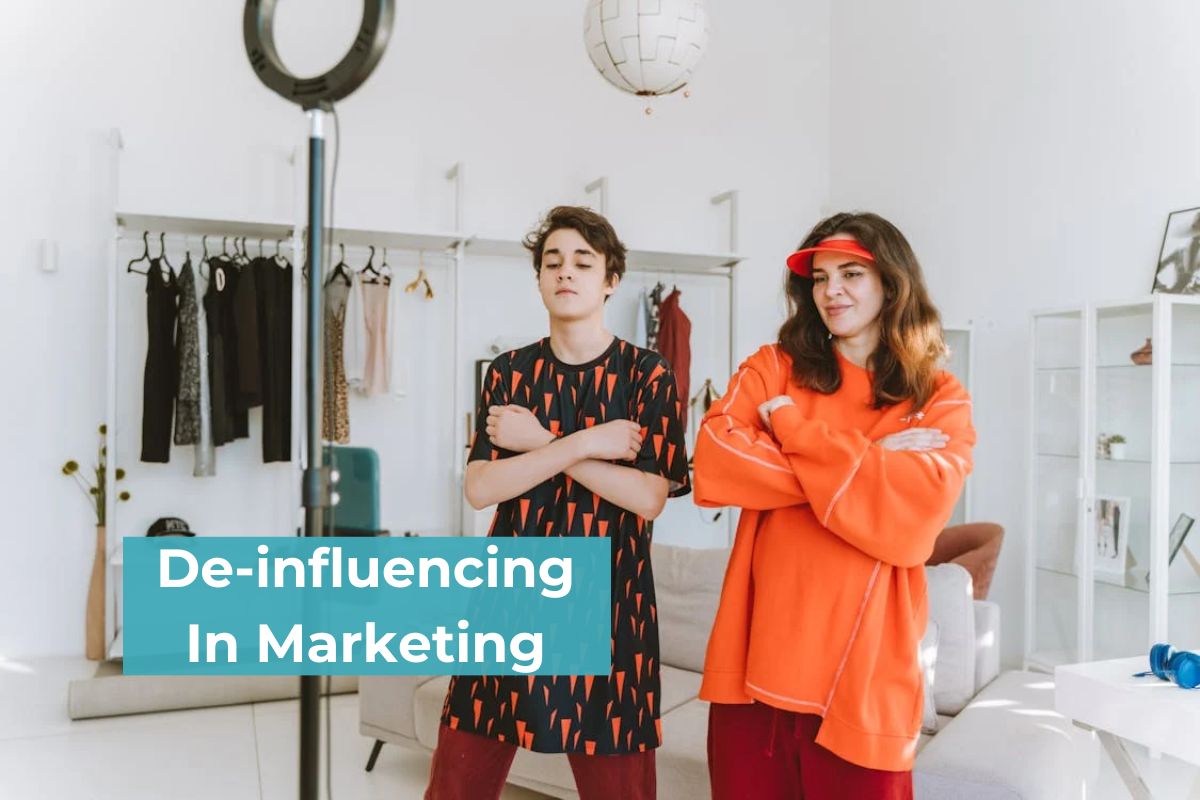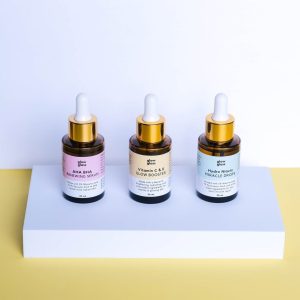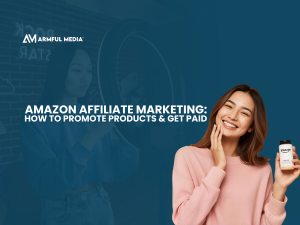Influencers are a large part of many brands’ marketing strategies, especially on social media. However, there are controversies that have made consumers wary of influencers who they feel are just trying to make them buy products with less quality.
The oversaturation of the influencer advertising market has caused adverse effects on consumers. Hence, the movement called de-influencing came about to dissuade consumers from buying products that are not worth their value.
Without further ado, we will take a more nuanced approach to understanding this movement, its effects, and its advantages in the influencing marketing landscape.
What Is De-influencing And Who Are De-influencers?
De-influencing is an emerging social media trend that encourages consumers to rethink their purchasing decisions. This might be because a product is overpriced, bad quality, or just not worth the hype.
Unlike influencer marketing which promotes products to consumers on social media, de-influencing takes a different approach. It discourages consumers from buying certain items that may be considered indulgent, ineffective, or not worth the money.
De-influencing is a sort of pushback to influencer marketing whereby influencers promote a product to their followers. De-influencing cuts through the influencing noise and dissuades people from following social media trends in buying products being promoted to them by influencers who aren’t being honest with their followers.
Meanwhile, de-influencers can be established influencers who are changing things up for content or might be disillusioned with influencer marketing and how money-driven it has become, or they can be new creators who are focused on this idea of critical consumption of products being promoted by influencers.
De-influencers seek to get people to be more thoughtful about what they buy and avoid impulse purchases. They go a step further whereby they highlight the cost of waste associated with specific industries, such as beauty and fashion.
Instead of saying “Buy this,” they say, “Don’t buy this.” De-influencers encourage people to evaluate whether they truly need a product before spending money on it. However, they can also suggest other alternatives to an overpriced product for consumers.
The Origin Of De-Influencing
The exact origin of de-influencing is a bit hazy as some people would argue they have been de-influencing before it became a trend. However, de-influencing appears to have surfaced on the video-sharing app, TikTok in early 2023, mainly within the beauty and lifestyle industry. Then it quickly spread like wildfire to other niches across various social media.
On TikTok, the #de-influencing hashtag gained significant traction, with 582 million views in the year 2023. The hashtag #de-influencing has now amassed over a billion views on TikTok. This massive reach fueled the trend and brought it to the attention of mainstream media. Therefore, there are de-influencing trends on YouTube, Facebook, Instagram, and X (formerly Twitter).
There was a growing sense of saturation with influencer marketing, with audiences becoming skeptical of inauthentic promotions. Influencer marketing has influencers both small and big promoting new products constantly, creating trends that people need to buy the product.
This got to a point where the hashtag trend #TikTokMadeMeBuyIt where people made impulse buying just from influencer videos promoting a product. Influencer promotion started to become disingenuous and inauthentic to consumers, particularly Gen Z, a critical generation that values authenticity and environmental consciousness.
As the trend picked up, de-influencing videos began to address the fast-fashion cycle, unethical labor practices, and excessive consumption habits that create a harmful cycle for the average consumer. This resonated with consumers seeking a more mindful approach to shopping and wanting not to be influenced by social media.
De-Influencing Vs Influencing Marketing Strategies
Influencing is an approach where social media personalities with large followings (influencers) promote products and services, often through sponsorships and partnerships with brands. They aim to create a positive image and drive sales. De-influencing, on the contrary, uses social media platforms to give honest reviews, highlighting the drawbacks of overhyped products and encouraging critical thinking before buying.
Although these trends are different, they share some similarities which will be discussed as well as their differences based on influencers and de-influencers.
Some of the similarities are:
- Largely, both influencers and de-influencers use social media platforms to reach their followers.
- They both focus on showing a product to their followers and discussing it, but they have different goals.
The majority of their similarities end there. However, they have vast differences in terms of their message, purpose, and monetization.
- Influencers collaborate with brands to promote products or services. Their goal is to drive sales and increase brand visibility. Influencers promote the products to their followers. The followers then buy and use the product based on the influencer’s approval.
On the other hand, de-influencers take the opposite approach. They discourage excessive consumption and encourage mindful purchasing decisions. Their purpose is to promote sustainability and critical thinking for consumers. Their followers will end up not buying the product or might look for better alternatives. - Influencers often endorse specific products, emphasizing their benefits and desirability. Their approach has turned into a brand-focused model that uses a positive and aspirational demeanor to influence consumers. Meanwhile, de-influencers highlight the downsides of certain products, urging followers to reconsider buying them.
De-influencers are more consumer-focused with a critical and informative tone. Not all of their de-influencing is scathing, some might show approval, however, the approval is critical and not as enthusiastic as that of influencers. - Influencers monetize their influence through brand partnerships, sponsored content, and affiliate marketing. This is how they earn to sustain themselves. However, some influencers might abuse this monetization and promote shoddy products just for a cashout. This is a major reason consumers are critical of influencers. Since influencers get paid to promote products, consumers are wary and see influencers coming off as inauthentic and untrustworthy.
However, de-influencers may not directly monetize their content. Their impact lies in raising awareness and changing consumer behavior. While some de-influencers genuinely promote thoughtful consumption, others might still be recommending alternative products, blurring the line between de-influencing and influencing.
The Value Of De-influencing As A Marketing Strategy
To some brands, de-influencing might be a harmful trend that has brought adverse effects to their sales. However, de-influencing can be a valuable tool for marketers looking to build trust and authenticity with their audience. Brands and sponsors just have to be aware of how to leverage it as a valuable marketing strategy the same way they view influencer marketing. Below are some important benefits brands can get from de-influencing:
1. Increased Credibility and Trust
De-influencing brings honesty by acknowledging that not all products are perfect. Influencer promotion tends to market a product as the best out there, sometimes hiding the shortcomings of the product. De-influencing rejects this approach, vying for more transparency which seems to be absent from some influencer promotion on social media.
This transparency resonates with consumers skeptical of inauthentic influencer endorsements. Brands stand to benefit from this by ensuring the influencers they partner with are honest about their reviews and the brands will produce better products to meet consumers demands.
2. More Engagement
De-influencing sparks conversation about a product. When creators discuss products critically, it encourages viewers to share their own experiences and opinions, leading to a more engaged audience. These conversations can be helpful if these products are great.
Therefore, it will serve as a form of influencer promotion made by consumers themselves. Moreover, if a de-influencer is deliberately trying to tarnish the reputation of a product or brand, the engagement of critical consumers who have used that product can stop them.
3. Improved Products
De-influencers are not merely cynics who dump bad reviews on products. They can provide valuable feedback on products that businesses can listen to and address these concerns to improve their products and services. Consequently, businesses need to leverage de-influencing and be upfront about their brand’s values and mission.
Therefore, it will serve as a form of influencer promotion made by consumers themselves. Moreover, if a de-influencer is deliberately trying to tarnish the reputation of a product or brand, the engagement of critical consumers who have used that product can stop them.
Merging Influencer Marketing And De-influencer Marketing Strategies
Although de-influencing has caused quite a stir in influencer marketing and social media, this is not the end of influencer marketing. In 2023, influencer marketing was a $21.1 billion industry, and 80% of brands had dedicated budgets for influencer marketing. According to the Northwestern University Retail Analytics Council, 92% of brands plan to increase their influencer marketing budgets, and influencer marketing is projected to become a $24 billion industry in 2024.
So, influencer marketing is going nowhere soon. However, it can take some notes from de-influencing if it wants to improve its strategy. Brands should consider merging de-influencing and influencing marketing strategies for better marketing results. To do this, brands should:
- Partner with influencers to provide critical reviews of their products. Encouraging them to discuss both the pros and cons of the products before buying them. This builds trust as the viewers see the influencer as being honest and not just pushing a sales message which is good for brand image.
- Have influencers debunk unrealistic expectations or common misconceptions about the product. It is better to have influencers as a trustworthy source of reviews to combat inauthentic influencer promotion.
- Work with influencers to promote mindful consumption of their products. They can show how to use your products effectively and for a longer duration, or suggest refill options to reduce waste.
- Before launching a product, partner with influencers to discuss similar products on the market, including their drawbacks. Then, brands can position their launch as addressing those shortcomings. This shows that as a brand you are listening to your consumer concerns.
- Partner with influencers who are known for being transparent about their experiences with brands and their products. They can create content discussing their past experiences with similar products, both positive and negative, and then review a sponsored brand product honestly.
By combining de-influencing and influencing strategies, businesses can create an authentic marketing approach that is suited to today’s skeptical consumers. It shows that a brand is confident in its product’s quality and willing to address potential issues rather than hide behind fake reviews from influencers after a cash grab.
FAQs
1. Are De-influencers A New Wave Of Influencers?
Not necessarily. Traditionally, influencers promote products and encourage purchases. On the other hand, de-influencers discourage buying certain products. However, some de-influencers might blur the lines, offering both positive and negative reviews depending on the product. Hence, a positive review from a de-influencer might be similar to an influencer promoting a product.
2. Is De-influencing Beneficial To Businesses?
It can be both positive and negative for businesses. It can be negative if the business’ product is being targeted, but it can also be an opportunity if the product gets good reviews from top de-influencers.
3. Why Did De-influencing Happen?
There are a few reasons why de-influencing became huge. De-influencing happened because consumers became wary of inauthentic influencer endorsements, the market being flooded with similar products, and consumers-turned-influencers pushing back against excessive consumption and promoting a more thoughtful approach to buying.
4. Will De-influencing Bring An End To Influencer Marketing?
No. It is a step forward for influencer marketing. De-influencing highlights the need for a more genuine approach as consumers want influencers to promote quality products not just products with a hefty sponsorship.
5. How Can Brands Avoid Being De-influenced?
Brands can’t avoid being de-influenced, but they can get good reviews from de-influencers who suggest their products as alternatives to more expensive products in the market.
Conclusion
De-influencing is not a harmful trend that is hurting influencer marketing. Rather it is targeting disingenuous influencer marketing and shoddy products being marketed by brands and influencers alike. It encourages an authentic, realistic, and sustainable approach to influencer marketing and consumerism. Henceforth, brands can take lessons from de-influencing and apply them to any partnership they will be having with influencers. This will improve the quality of their services, products, and marketing. Meanwhile, consumers will get better quality products for their money and become loyal long-term customers.

The Armful Media Content Team is a group of skilled writers, researchers, and strategists passionate about influencer marketing. We create content that drives real results, engages audiences, and builds trust, helping brands expand their reach and connect with their audience in meaningful ways.








